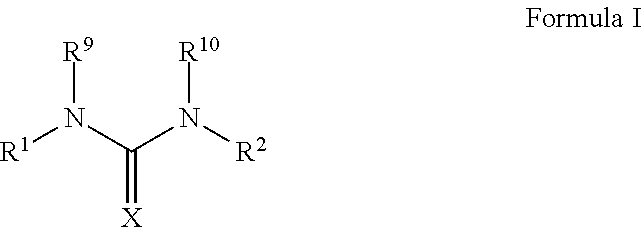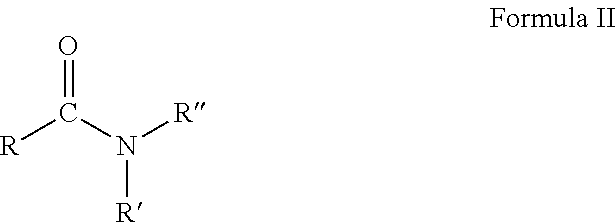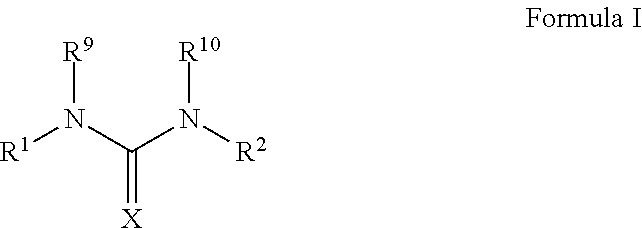Plant treatment composition
a technology of composition and plant, applied in the field of plant treatment composition, can solve the problems of insufficient mobilization, low availability of secondary nutrients and micronutrients in plants, and difficult introduction of secondary nutrients and micronutrients into plants
- Summary
- Abstract
- Description
- Claims
- Application Information
AI Technical Summary
Benefits of technology
Problems solved by technology
Method used
Image
Examples
example 2
[0105]Analysis: 5% w / w Ca, 100 ppm DPU
[0106]Sample C: DPU (0.12 g) was dissolved in Agnique AMD10 (11.88 g) and Lutensol FA12K (18.0 g) to give a 0.4% w / w DPU concentrate.
[0107]Sample D: A calcium nitrate / zinc nitrate base was made to the composition below:
ComponentMass / gWater784.9Zinc Oxide16.5Nitric acid (70%)33.9Citric acid2.0Calcium nitrate (industrial) 335Molasses10.1
[0108]To make the finished formulation, Sample C (30 g) was added with stirring to Sample D (1186 g).
[0109]Result: The finished formulation formed an emulsion, which remained clear and homogeneous after 2 weeks storage between +3° C. and +50° C.
example 3
[0110]Analysis: 9.5% w / w Ca, 100 ppm DPU
[0111]Sample E: DPU (1 g) was dissolved in Agnique AMD10 (99 g) to give a 1% w / w solution of DPU. To the 1% w / w solution of DPU (30.5 g of) was added Atlox 4991 (45.8 g) to give a 0.4% w / w DPU concentrate.
[0112]Sample F: A calcium nitrate / zinc nitrate base was made to the composition below:
ComponentMass / gWater595Zinc Oxide14.3Nitric acid (70%)31.3Calcium nitrate (industrial)734.4Molasses7.0
[0113]To make the finished formulation, Sample E (30 g) was added with stirring to Sample F (1382 g).
[0114]Result: The finished formulation formed an emulsion, which remained homogeneous and almost clear during 2 weeks storage between −18 and +40° C.
example 4
[0115]Analysis: 10.5% w / w Ca, 200 ppm DPU
[0116]Sample G: DPU (0.8 g) was dissolved in Agnique AMD10 (39.2 g) and Atlox 4991 (60.0 g) to give a 0.8% w / w DPU concentrate.
[0117]Sample H: A calcium nitrate / zinc nitrate base was made to the composition below:
ComponentMass / gWater584Zinc Oxide14.3Nitric acid (70%)31.3Calcium nitrate (industrial)773.1Molasses7.0
[0118]To make the finished formulation, Sample G (35.6 g) was added with stirring to Sample H (1408 g).
[0119]Result: The finished formulation formed an emulsion, with the appearance of an almost clear, homogeneous liquid.
PUM
| Property | Measurement | Unit |
|---|---|---|
| solubility | aaaaa | aaaaa |
| solubility | aaaaa | aaaaa |
| solubility | aaaaa | aaaaa |
Abstract
Description
Claims
Application Information
 Login to View More
Login to View More - R&D
- Intellectual Property
- Life Sciences
- Materials
- Tech Scout
- Unparalleled Data Quality
- Higher Quality Content
- 60% Fewer Hallucinations
Browse by: Latest US Patents, China's latest patents, Technical Efficacy Thesaurus, Application Domain, Technology Topic, Popular Technical Reports.
© 2025 PatSnap. All rights reserved.Legal|Privacy policy|Modern Slavery Act Transparency Statement|Sitemap|About US| Contact US: help@patsnap.com



